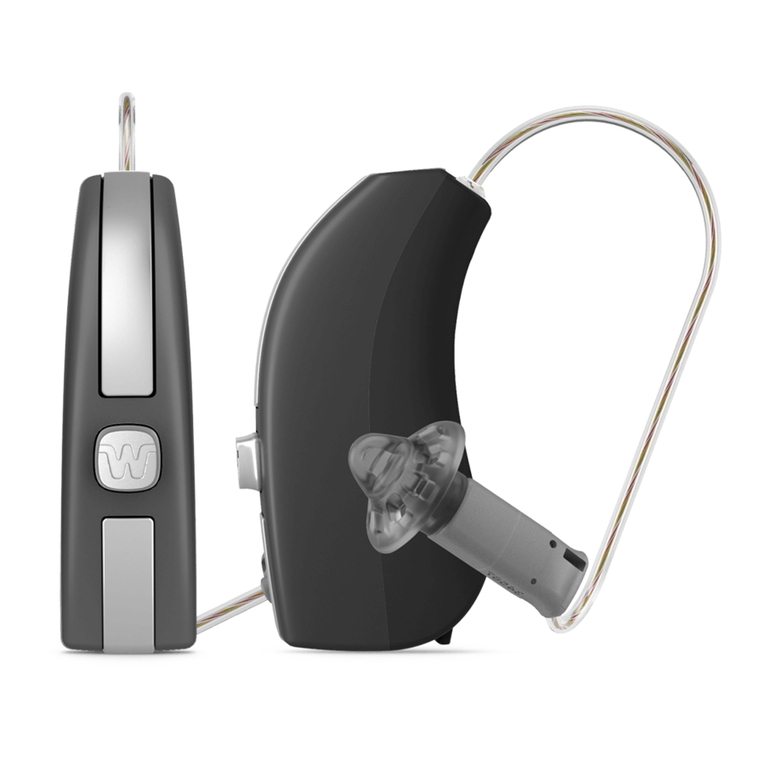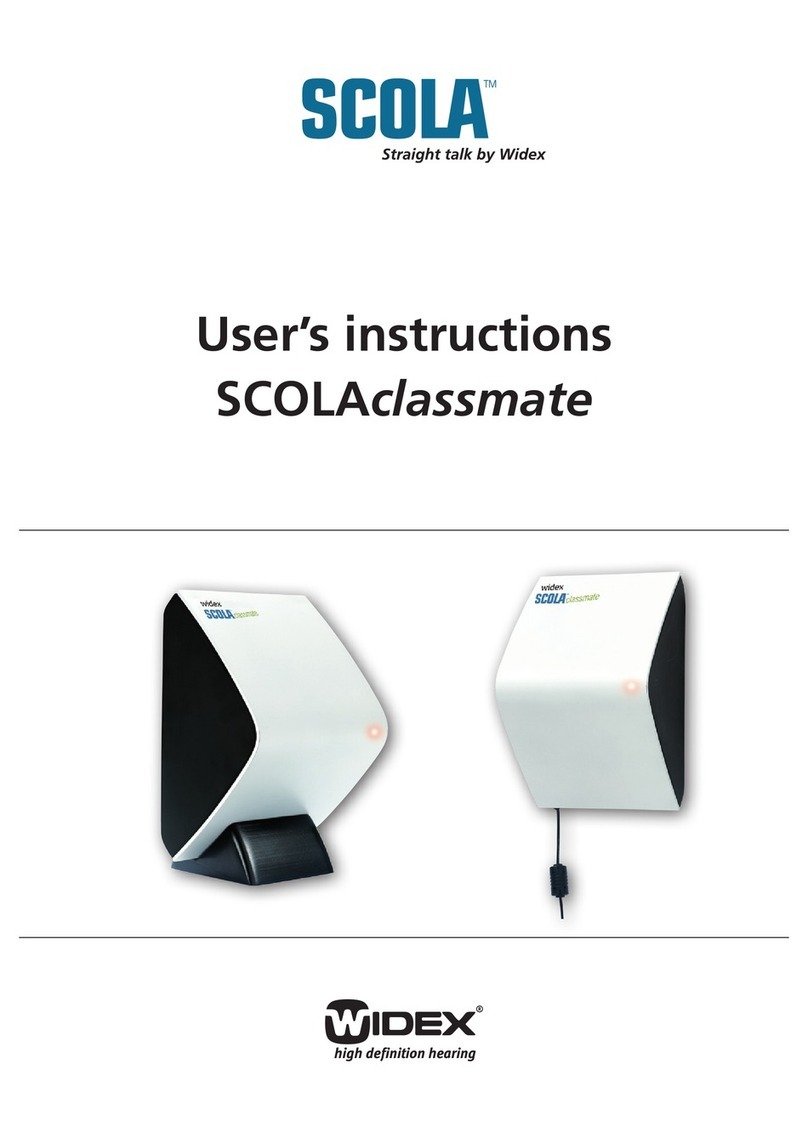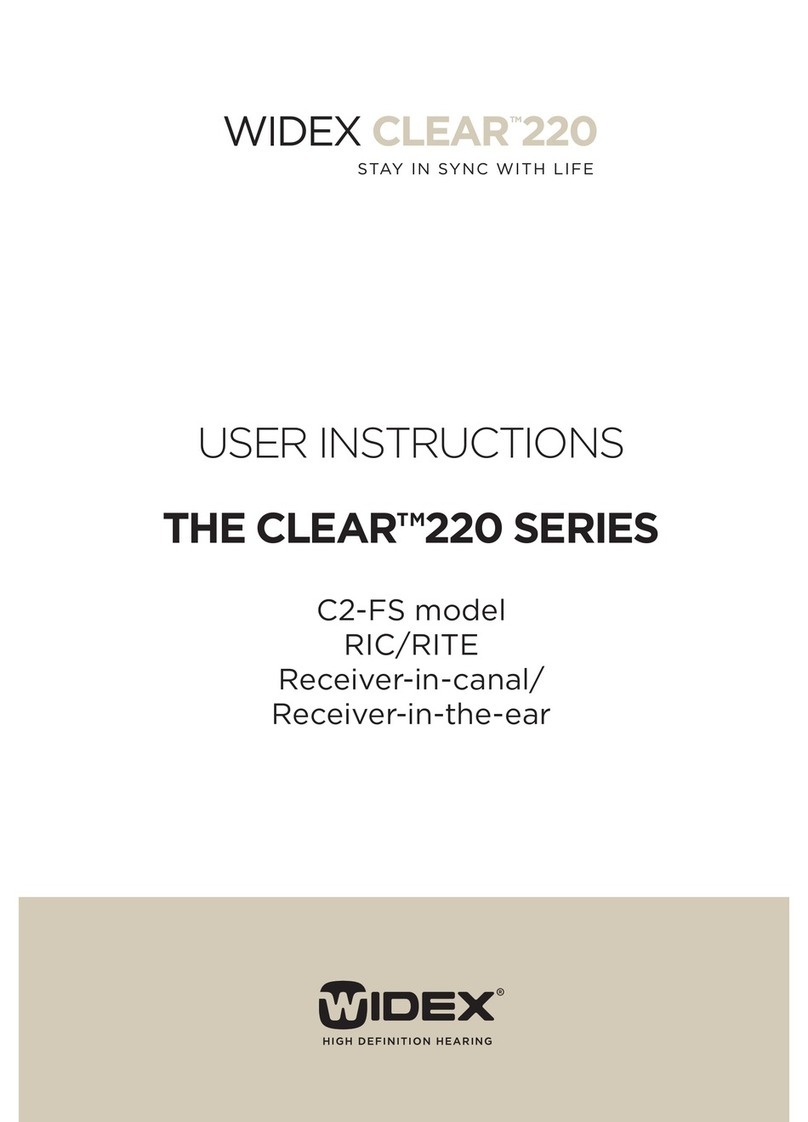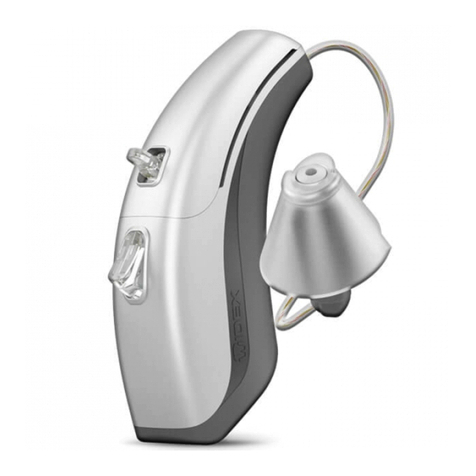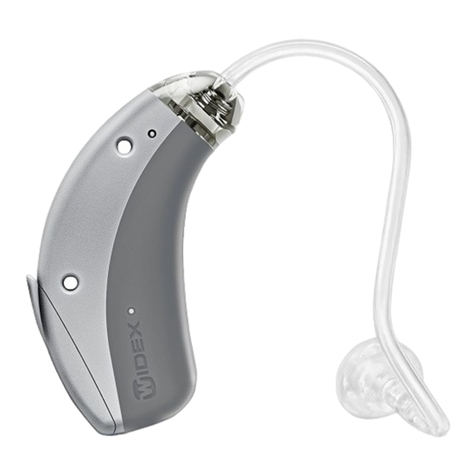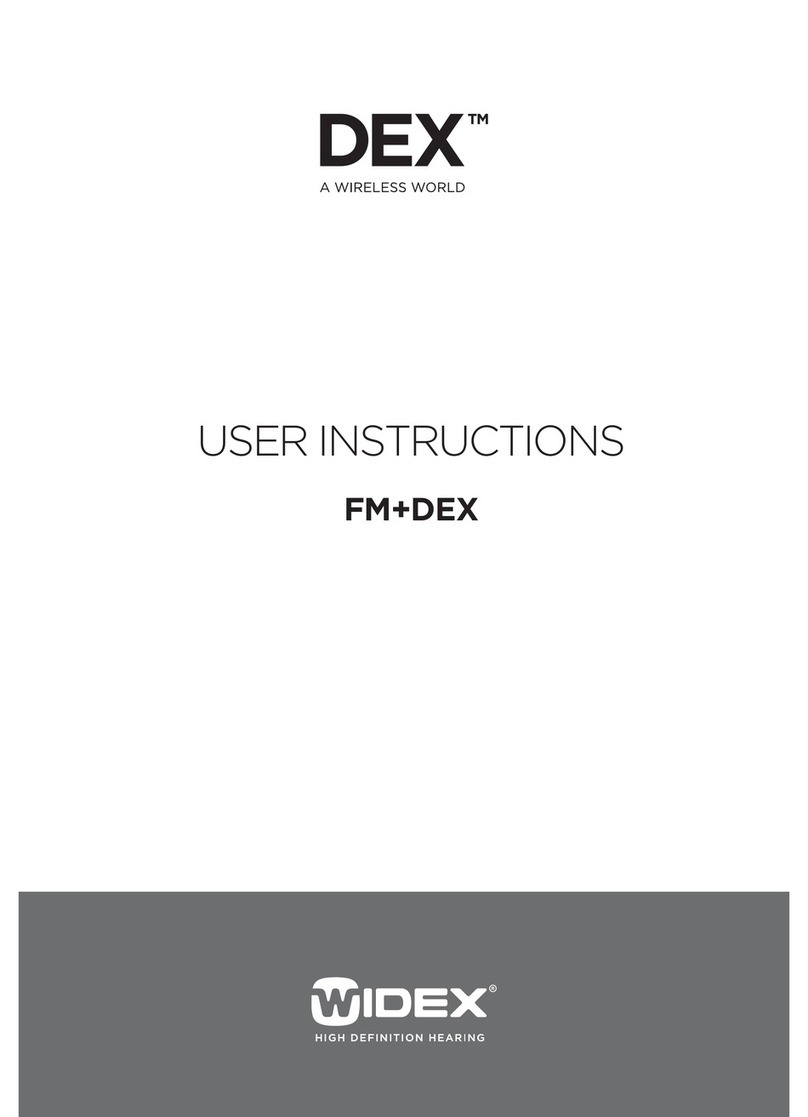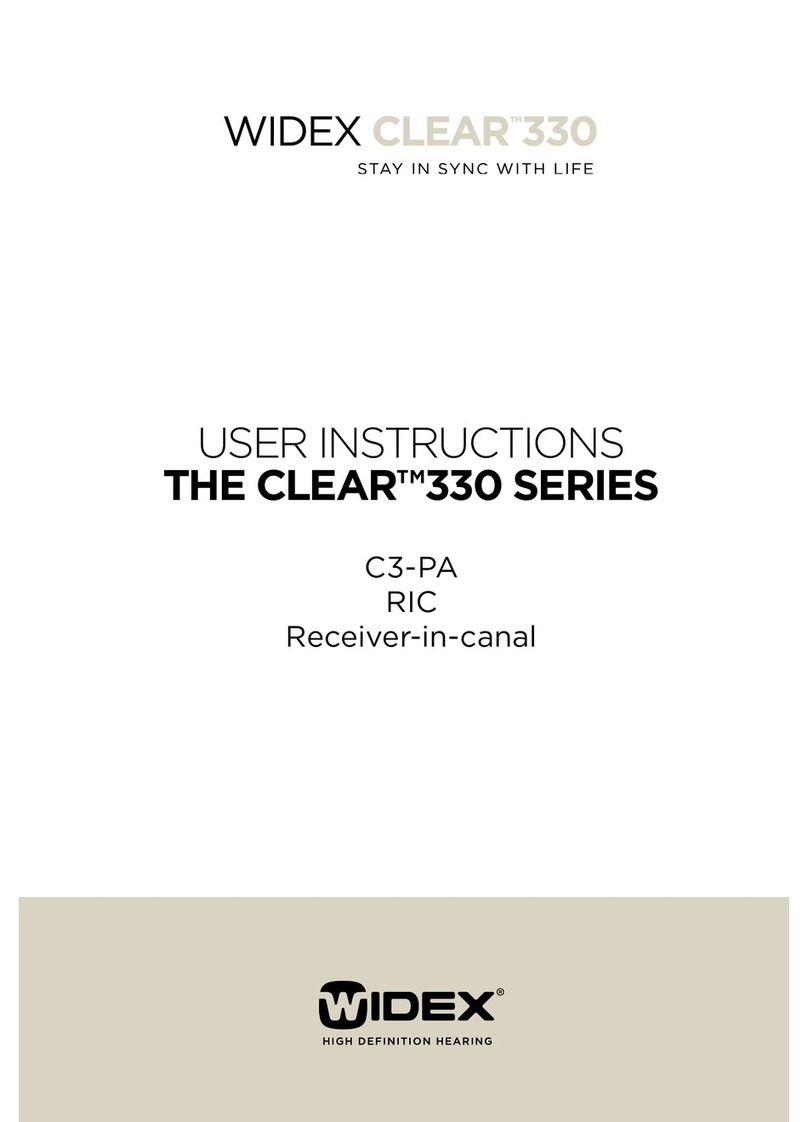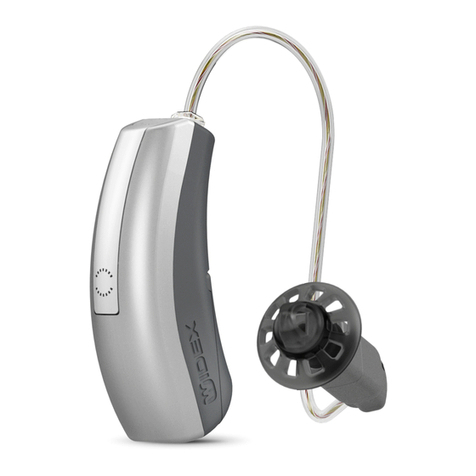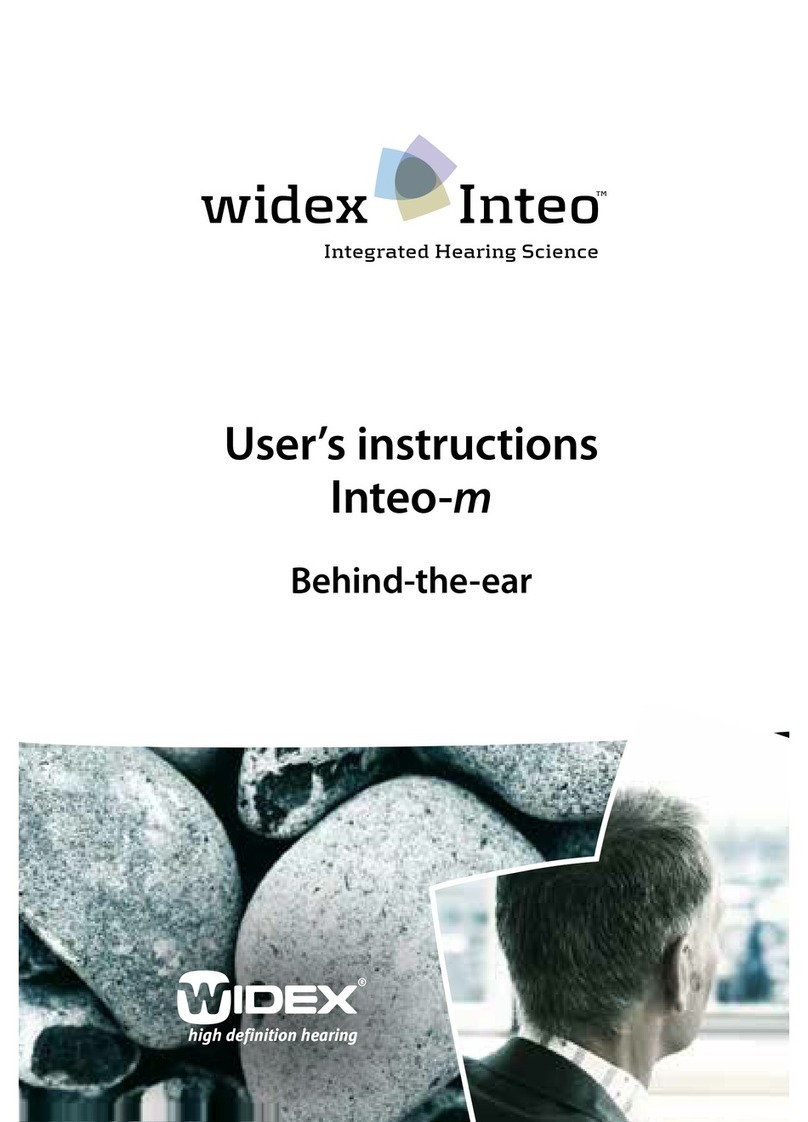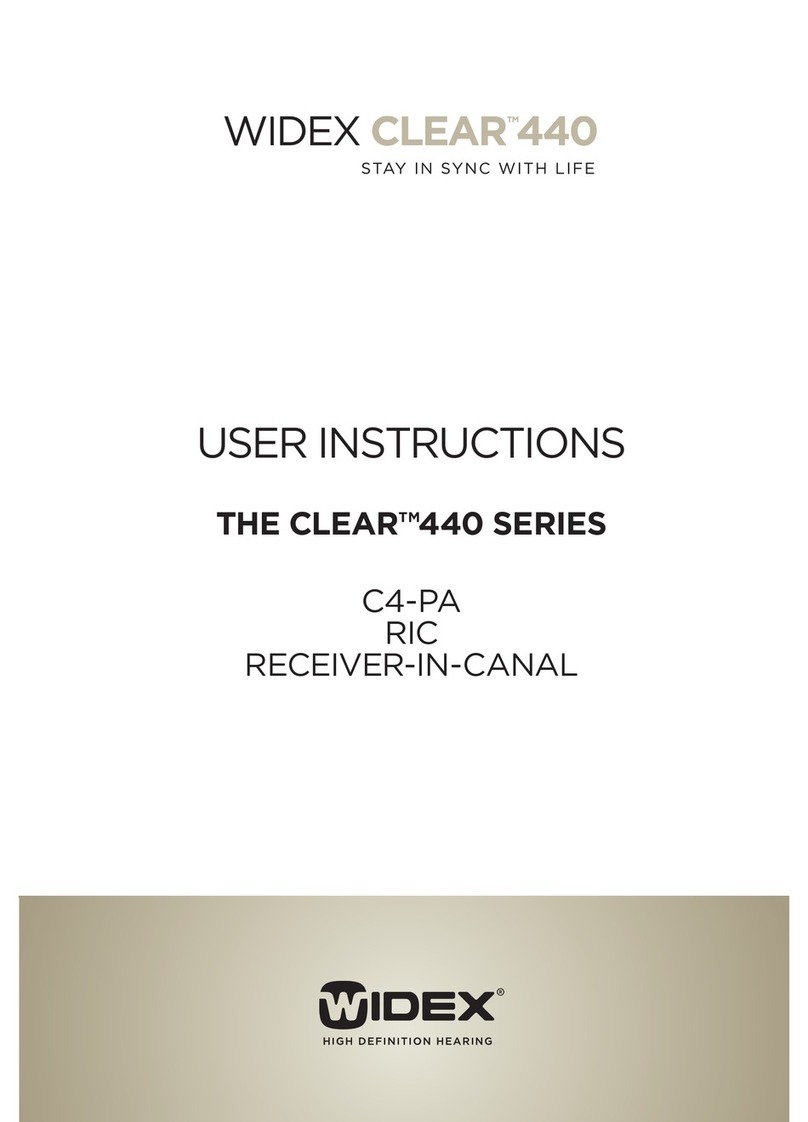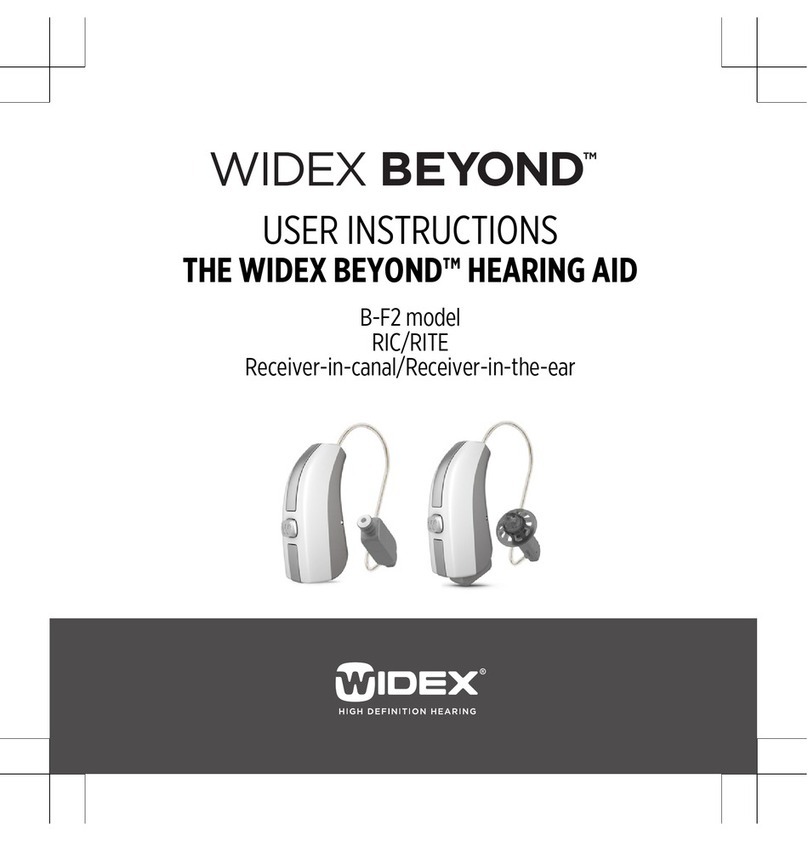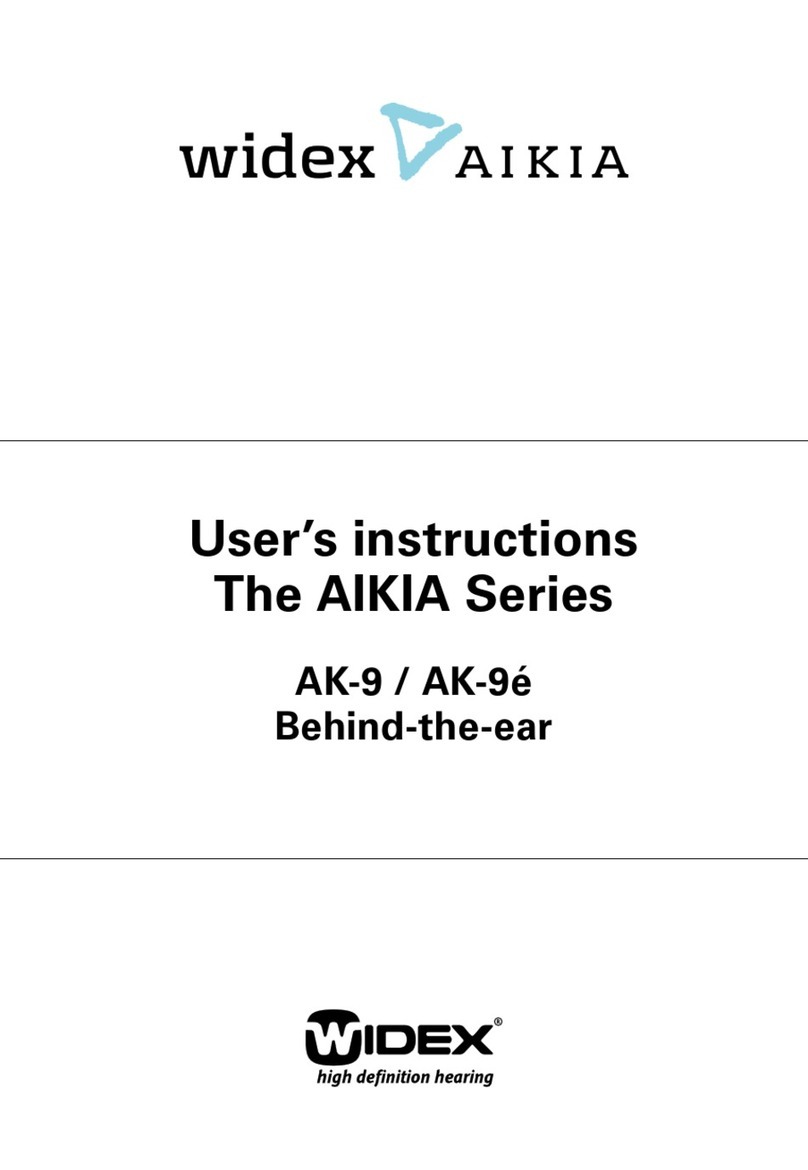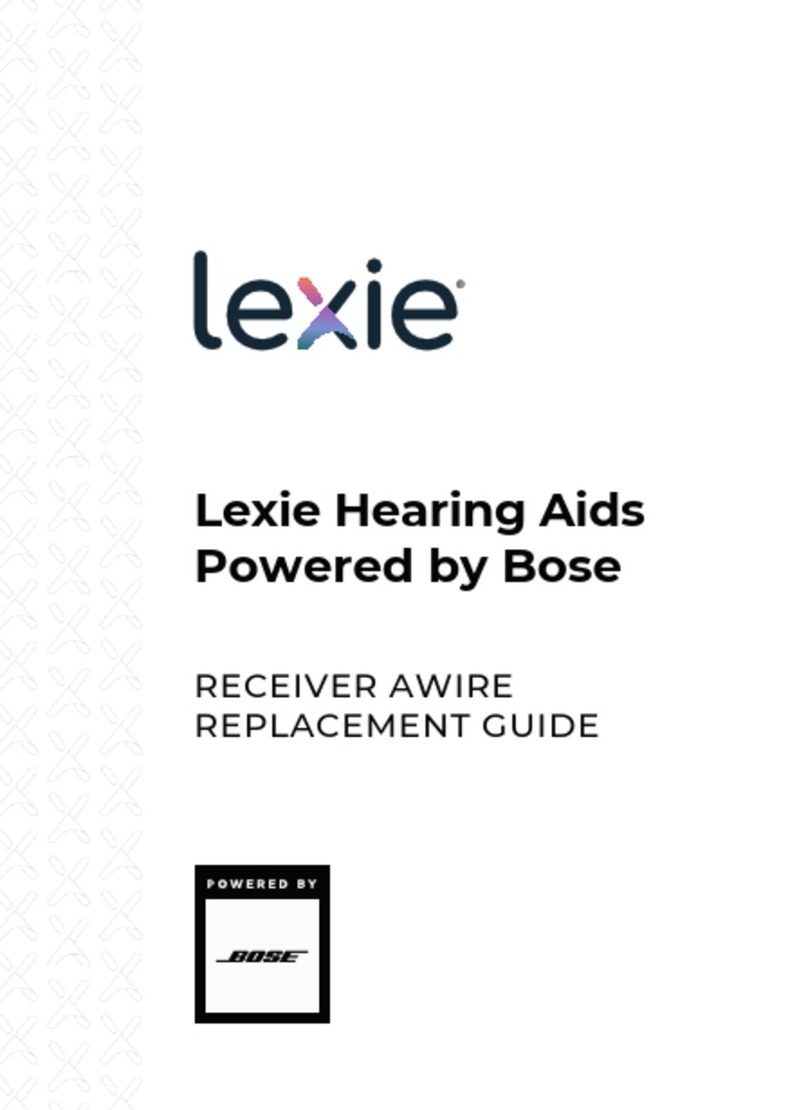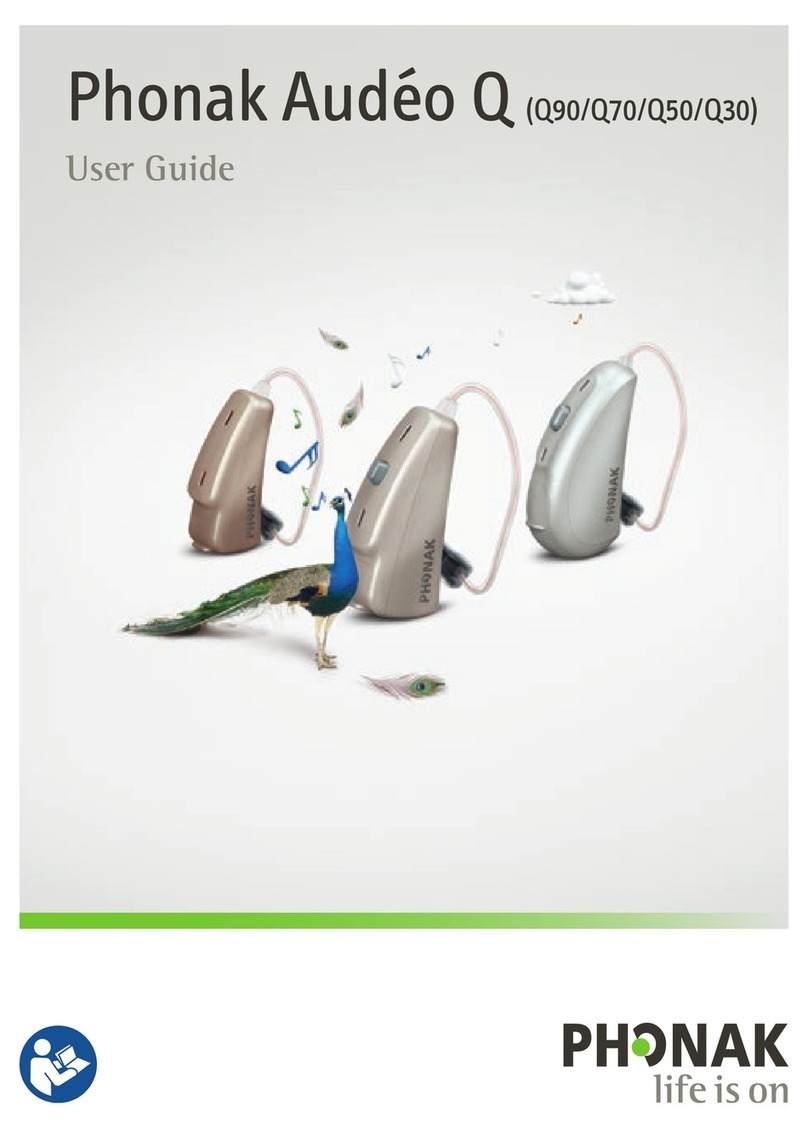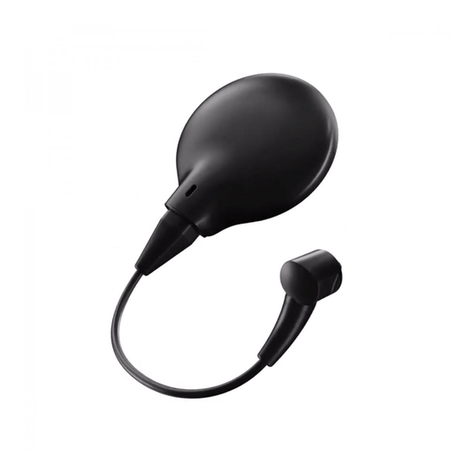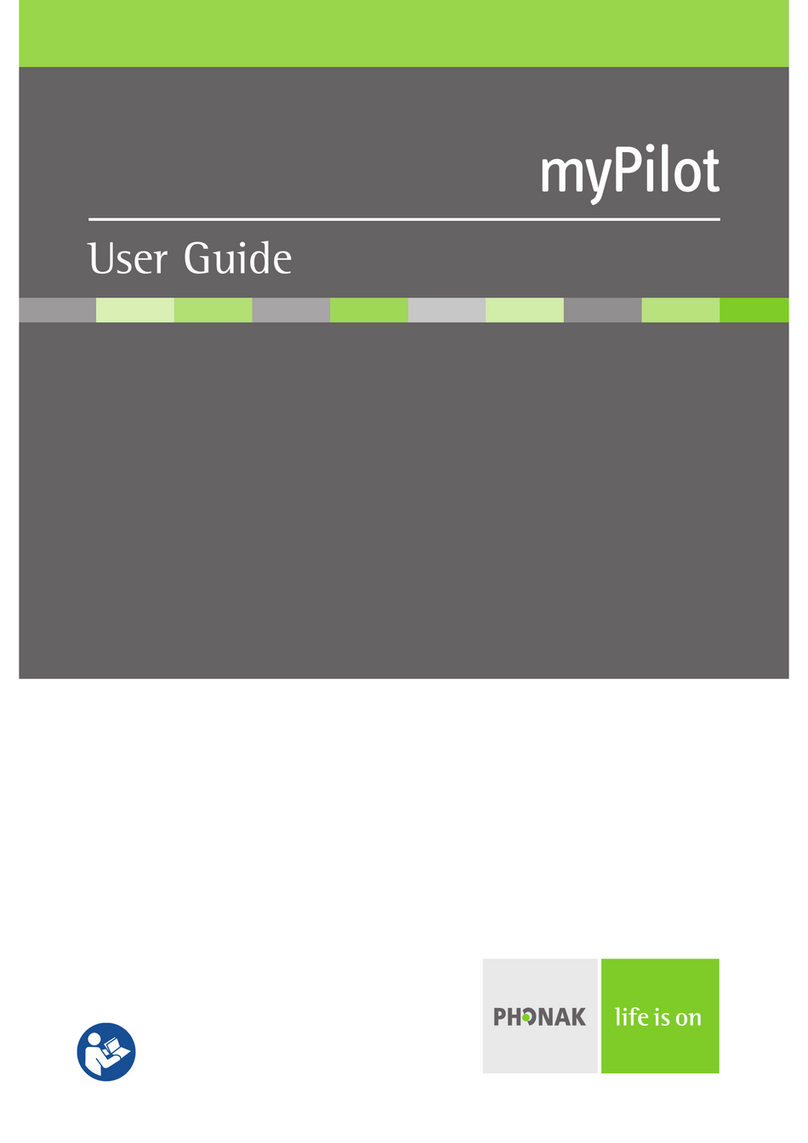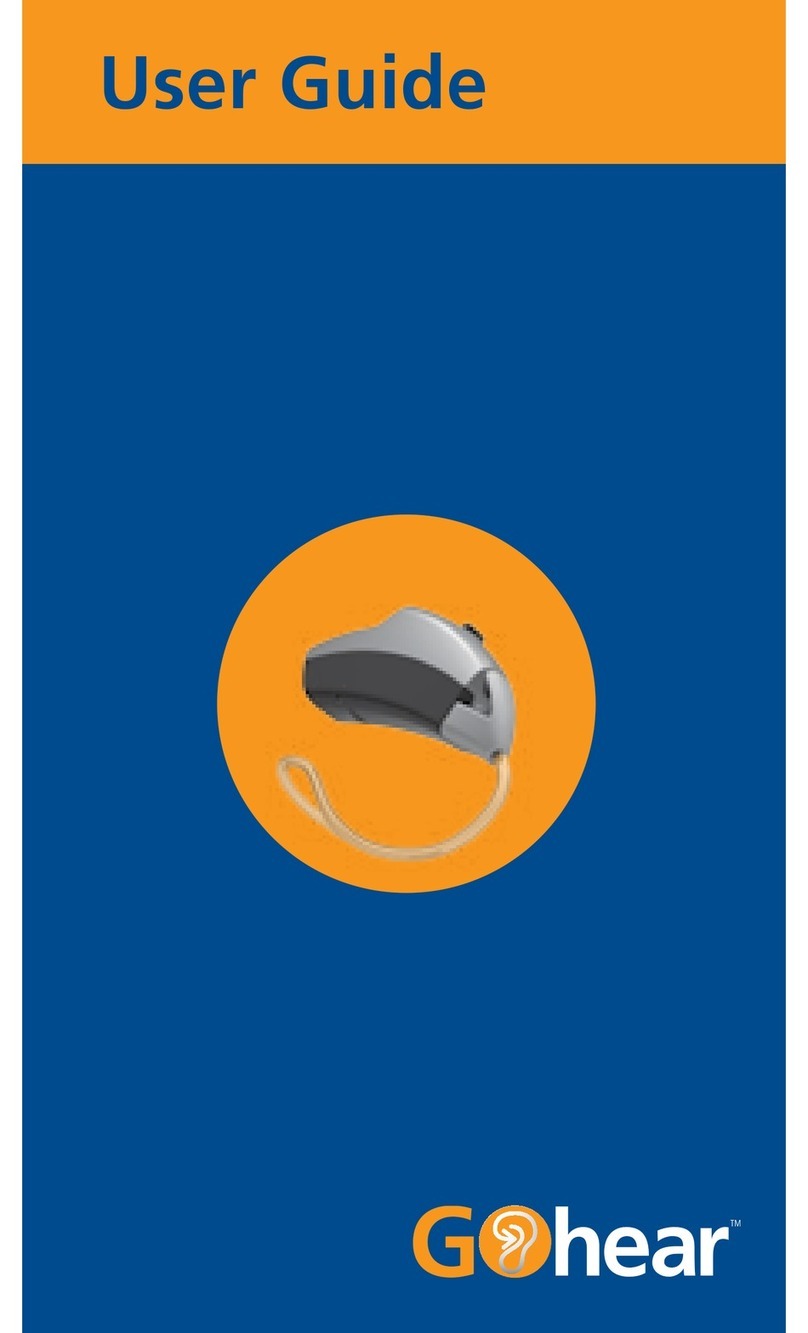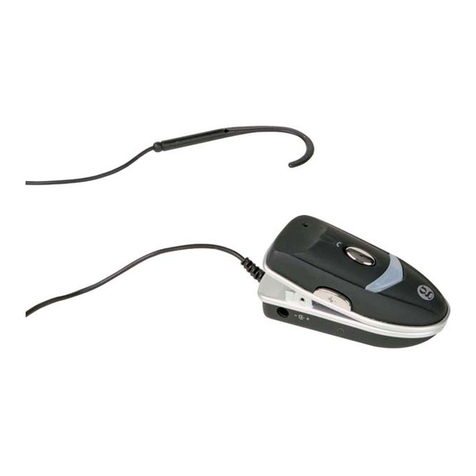3
CONTENTS
SYMBOLS. . . . . . . . . . . . . . . . . . . . . . . . . . . . . . . . . . . . . . . . . . . . . .
THEHEARINGAID . . . . . . . . . . . . . . . . . . . . . . . . . . . . . . . . . . . . . .
Rightleftidentification. . . . . . . . . . . . . . . . . . . . . . . . . . . . . . . . . .
Acousticindicators . . . . . . . . . . . . . . . . . . . . . . . . . . . . . . . . . . . . . .
Thebattery. . . . . . . . . . . . . . . . . . . . . . . . . . . . . . . . . . . . . . . . . . . . .
Insertingthebattery . . . . . . . . . . . . . . . . . . . . . . . . . . . . . . . . . .
Lowbatteryindication. . . . . . . . . . . . . . . . . . . . . . . . . . . . . . . .
Turningthehearingaidonandoff . . . . . . . . . . . . . . . . . . . . . . .
Positioningthehearingaid . . . . . . . . . . . . . . . . . . . . . . . . . . . . . .
Removingthehearingaid . . . . . . . . . . . . . . . . . . . . . . . . . . . . . .
Volumeadjustment . . . . . . . . . . . . . . . . . . . . . . . . . . . . . . . . . . . .
Lostpartneralarm . . . . . . . . . . . . . . . . . . . . . . . . . . . . . . . . . . . . .
Listeningprograms. . . . . . . . . . . . . . . . . . . . . . . . . . . . . . . . . . . . .
Switchingbetweenthelisteningprograms . . . . . . . . . . . . . .
Zen . . . . . . . . . . . . . . . . . . . . . . . . . . . . . . . . . . . . . . . . . . . . . . .
Phone . . . . . . . . . . . . . . . . . . . . . . . . . . . . . . . . . . . . . . . . . . . . .
Usingatelephone. . . . . . . . . . . . . . . . . . . . . . . . . . . . . . . . . . . . . .
Cleaning . . . . . . . . . . . . . . . . . . . . . . . . . . . . . . . . . . . . . . . . . . . . . .
ACCESSORIES. . . . . . . . . . . . . . . . . . . . . . . . . . . . . . . . . . . . . . . . .
INCASEOFMALFUNCTION . . . . . . . . . . . . . . . . . . . . . . . . . . . . .
CARINGFORYOURHEARINGAID. . . . . . . . . . . . . . . . . . . . . . . .
WARNINGS. . . . . . . . . . . . . . . . . . . . . . . . . . . . . . . . . . . . . . . . . . .
ADVICE . . . . . . . . . . . . . . . . . . . . . . . . . . . . . . . . . . . . . . . . . . . . . .
REGULATORYINFORMATION. . . . . . . . . . . . . . . . . . . . . . . . . . . .

